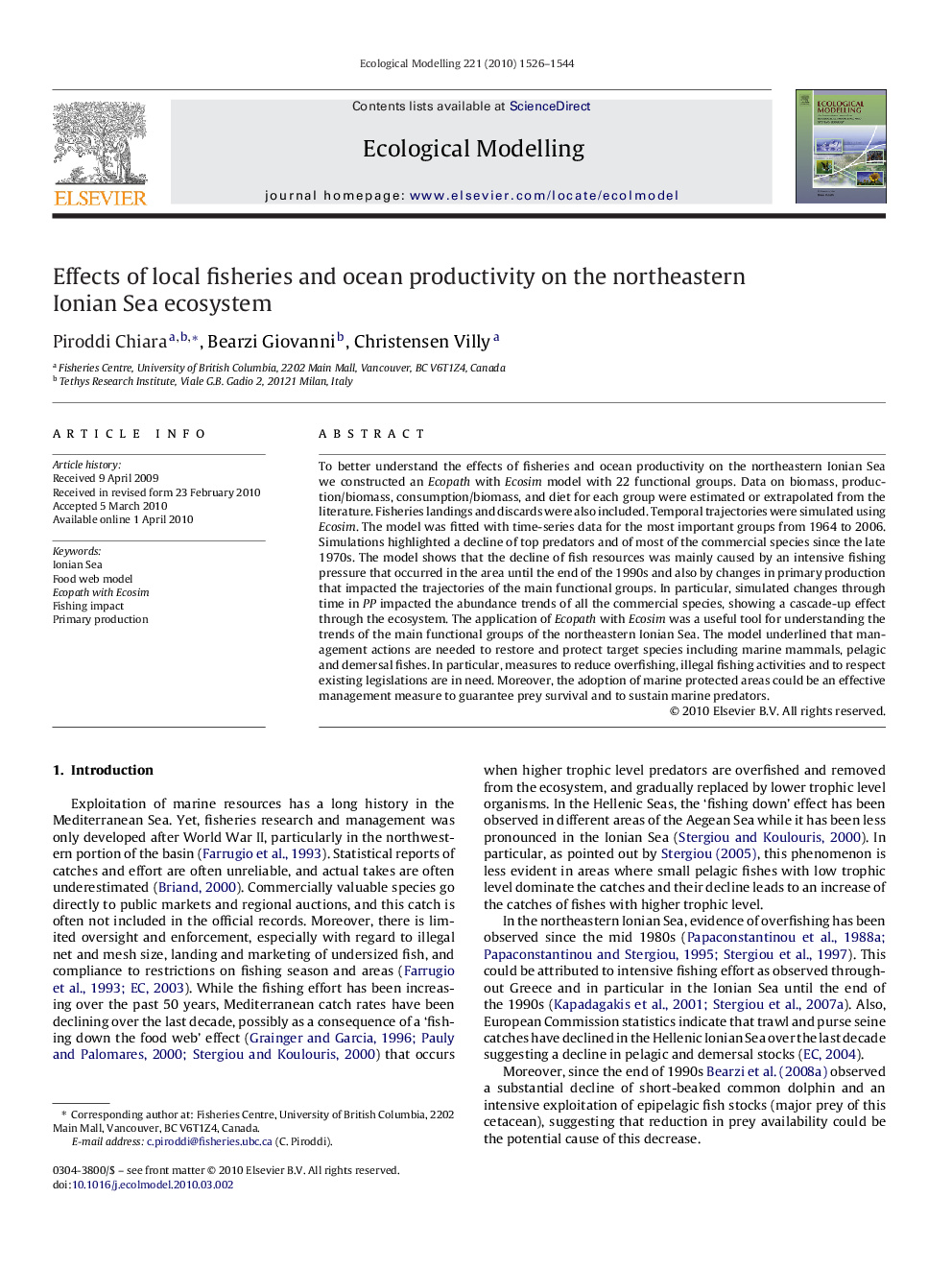| Article ID | Journal | Published Year | Pages | File Type |
|---|---|---|---|---|
| 4377419 | Ecological Modelling | 2010 | 19 Pages |
To better understand the effects of fisheries and ocean productivity on the northeastern Ionian Sea we constructed an Ecopath with Ecosim model with 22 functional groups. Data on biomass, production/biomass, consumption/biomass, and diet for each group were estimated or extrapolated from the literature. Fisheries landings and discards were also included. Temporal trajectories were simulated using Ecosim. The model was fitted with time-series data for the most important groups from 1964 to 2006. Simulations highlighted a decline of top predators and of most of the commercial species since the late 1970s. The model shows that the decline of fish resources was mainly caused by an intensive fishing pressure that occurred in the area until the end of the 1990s and also by changes in primary production that impacted the trajectories of the main functional groups. In particular, simulated changes through time in PP impacted the abundance trends of all the commercial species, showing a cascade-up effect through the ecosystem. The application of Ecopath with Ecosim was a useful tool for understanding the trends of the main functional groups of the northeastern Ionian Sea. The model underlined that management actions are needed to restore and protect target species including marine mammals, pelagic and demersal fishes. In particular, measures to reduce overfishing, illegal fishing activities and to respect existing legislations are in need. Moreover, the adoption of marine protected areas could be an effective management measure to guarantee prey survival and to sustain marine predators.
